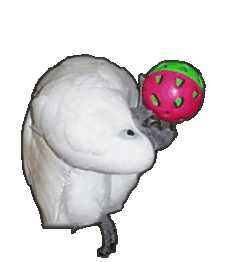Published Oct 26, 2008
I wasn’t really planning to go out this weekend; I was going to stay in, quailing in fear at the economy and enjoying a quiet, slow sort of nervous breakdown in sympathy with said economy. But, this being LA, somehow I ended up at Heath Ledger’s uncle’s garage sale. And there I found this fun thing:

It’s a moderately beat-up Canon AE-1, Canon’s first consumer-level 35mm SLR that could automatically set the exposure for your shot — and, even more interesting, the first truly componentized, mass-produced SLR. As you can see from the photo, I got it with the stock 50mm lens, a wide-angle 23mm lens, and a big flash, which, at the price, was a very good deal.1
Now, I already have a Canon EOS Rebel body that can take the same lenses my Canon Rebel XTi digital body takes, so it’s a little inconvenient to have a new camera that takes an entirely different lens system. Add to that the weight of the AE-1, which appears to be heavier than even the dSLR, and I could have a bit of a hassle on my hands. But there’s something that seems magical about the AE-1. Maybe it’s the rock-solid build, which, even in this 20-year-old body, means less creaking and tighter fits than in the 35mm or digital Rebel.
But probably it’s the manual controls. The AE-1, in its automatic form, shoots on what’s called shutter priority. Cameras2 let in more light in two ways: by opening the shutter for longer periods, or by opening a diaphragm at the back of the lens, called an aperture, wider, letting in more light in a fixed amount of time. It’s basically the difference between opening the door to a dark room just a crack for a very long time or opening it very wide for a short time. The camera exposes the film properly by picking the combination of how far it opens the door (aperture) and how long it opens the door (shutter) for; obviously, you can open the door wider but for a shorter period of time, or open it just a crack for a longer time, and get an exposure that still works.
With shutter priority, you tell the camera how fast you want the shutter to fire and it picks the aperture that lets it get the right exposure at that shutter speed. This is great if you want to freeze action, as in sports photography, but I don’t do much of that. Aperture priority is great if you want to blur your backgrounds or foregrounds to emphasize certain elements in the photograph, and I do do that. So, I basically can’t use the automatic mode on the AE-1.
And that’s the beauty of it — I can go out there with a totally3 manual system, focus my shot manually, pick the aperture I want, find the shutter speed that goes with that, and shoot. It’s very… slow and basic. And that’s good! As much as I love my dSLR, it’s easy to get casual with it. Shoot a few shots, look at the results in the LCD, and not really understand why it came out right or wrong — that’s not how you take good pictures. Yet that’s also how I’ve found myself shooting all too much lately.
So getting closer to the basics should be good. I probably won’t shoot much film — goodness knows I don’t want to spend on the developing costs4 — but it’ll be a fun way to improve my shooting overall if I can get in a roll a month or so. I’ve got a few rolls in the fridge — Fujifilm 800, Ilford Pan-f+ 50 and Delta 100, and a great roll of Kodak from Costa Rica that I think is the lovely-colored stuff they sold before they switched to their Gold brand, which itself came before that “high-def” crap they sell now that’s totally unusable. Now all I need is a good assignment!
1 Although not that good of a deal; I had to buy the system without knowing if it worked or not. Figured, worst case scenario, I could take it apart, try to fix it, and not worry about putting it back together again!
2 All of them.
3 Almost — it’s got a through-the-lens light meter. Which probably constitutes cheating, but I’m not sure I have the patience to systematically figure out my exposures by some combination of rules-of-thumb and experimentation.
4 Proposed excessive solution: develop black-and-white at home, scan negatives in, enjoy!
